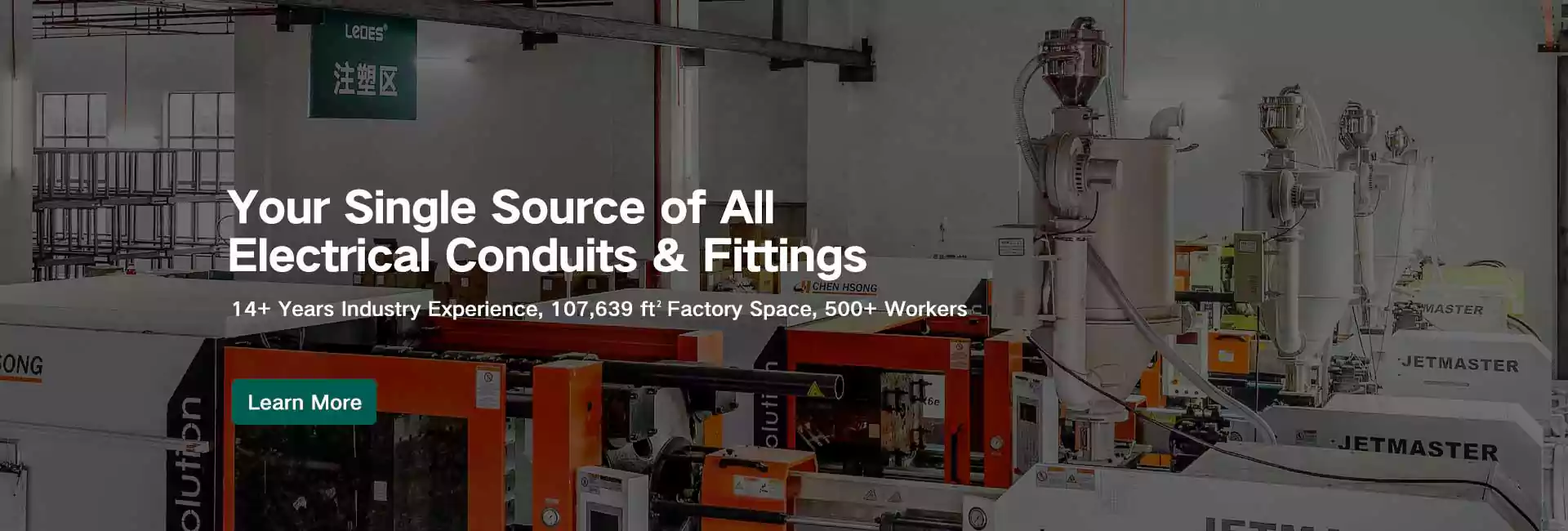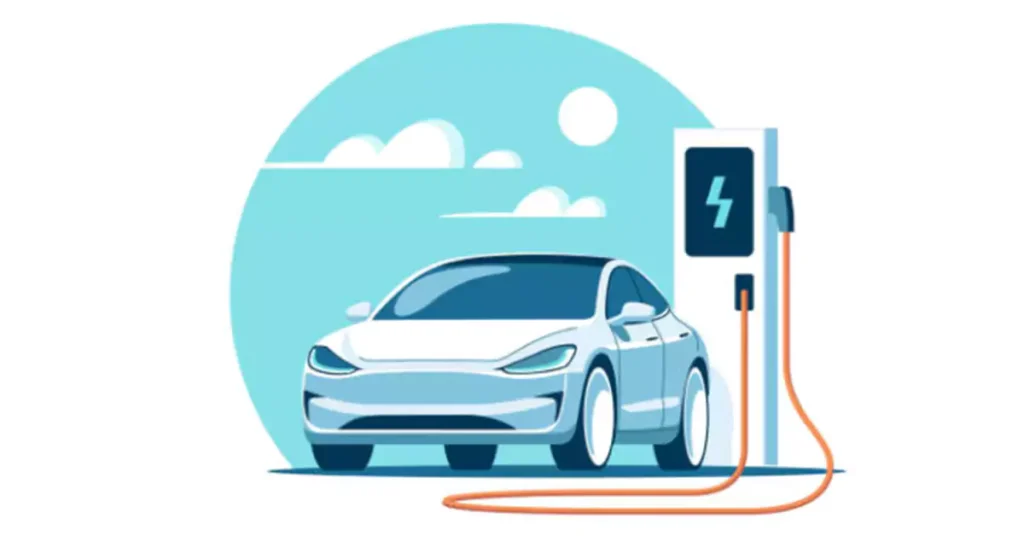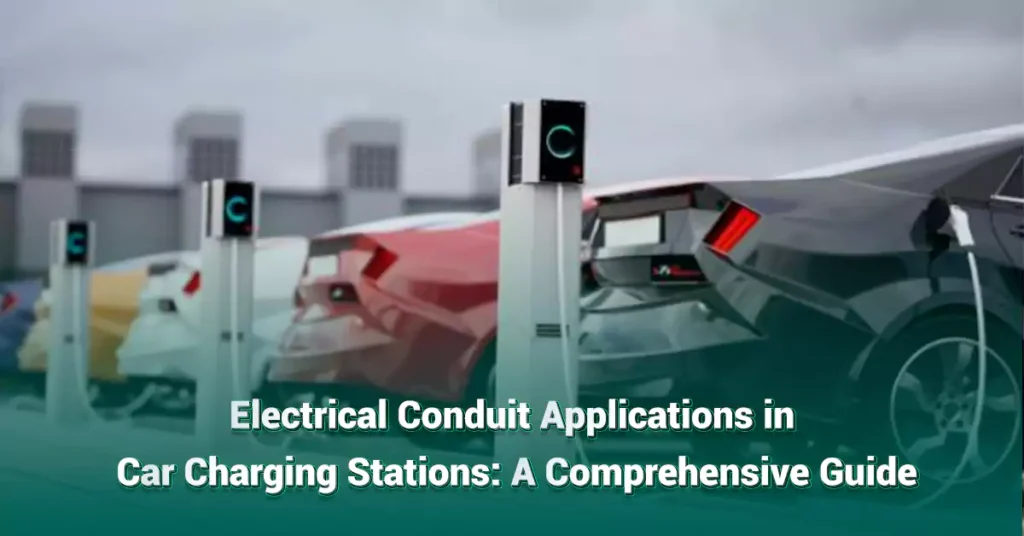
Tabla de contenido
As the world shifts toward electric vehicles (EVs), the demand for efficient, safe, and reliable EV charging infrastructure has grown exponentially. One crucial element of this infrastructure is the electrical conduit system, which protects the wires that carry power to charging stations. EV charging stations, especially those handling high-voltage and high-current demands, require conduit systems capable of withstanding harsh environments, preventing electrical hazards, and maintaining operational efficiency. This article explores the types of conduits used in EV charging stations, the specific requirements for these systems, and best practices for installation.
EV charging stations are locations where electric vehicles can recharge their batteries by drawing power from the grid. These stations are a vital component of EV infrastructure and come in various levels, depending on the speed and power capacity they offer. Understanding these levels helps illustrate why proper conduit selection and installation are critical.
Level 1 Charger
- Voltage/Power: 120 volts AC (common in household outlets).
- Charging Speed: Adds 3-5 miles of range per hour.
- Best For: Residential use or overnight charging.
Level 2 Charger
- Voltage/Power: 240 volts AC.
- Charging Speed: Adds 10-60 miles of range per hour.
- Best For: Homes, businesses, and public stations needing faster charging.
Level 3 Charger (DC Fast Charger)
- Voltage/Power: 480 volts DC or higher.
- Charging Speed: Can charge 80% of a vehicle’s battery in 30 minutes.
- Best For: Public stations in commercial or highway locations where quick charging is essential.
Each charging level has different voltage and current requirements, making it vital to use appropriate electrical conduit systems for safe and efficient power delivery.
Electrical conduits serve as protective pathways for the wires that transfer power from the electrical grid to the EV charging station. Various types of conduits can be used, each with specific applications based on installation environments, voltage levels, and safety considerations. The most common types of conduits used in EV charging stations include:
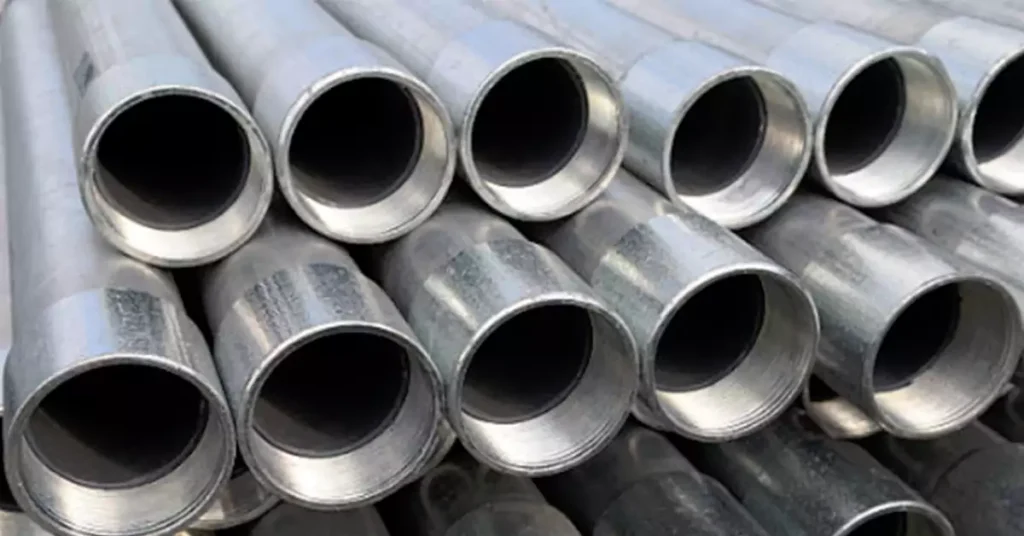
Best For: Outdoor and underground installations where high durability is required.
Benefits: Offers superior protection against physical damage and corrosion, and can serve as a grounding path.
Application: RMC is ideal for high-voltage installations (such as Level 3 chargers), as it can withstand significant environmental stresses.
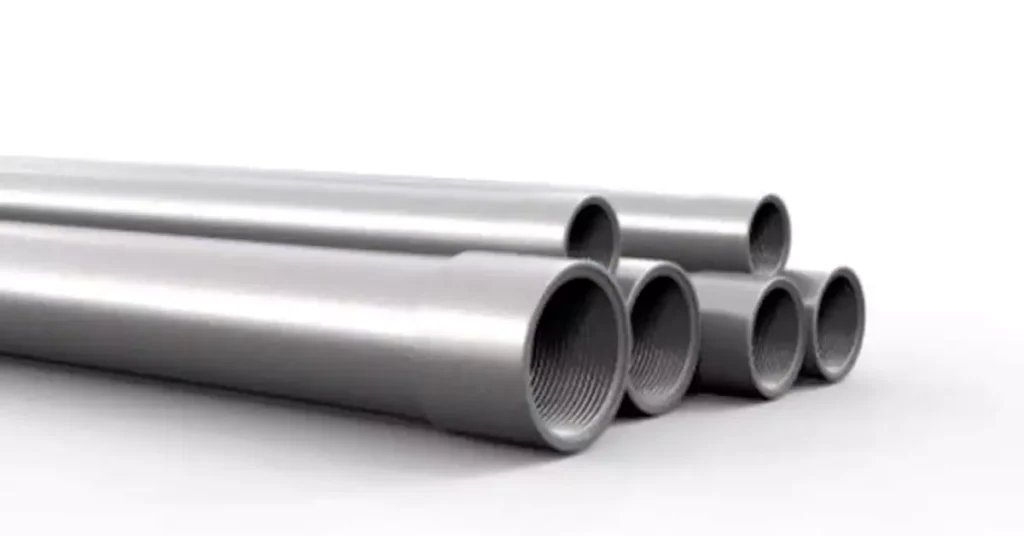
Best For: Outdoor and commercial environments.
Benefits: Lighter than RMC but still provides excellent durability and strength.
Application: Often used in commercial EV charging stations where the conduit is exposed to both physical impact and environmental factors.
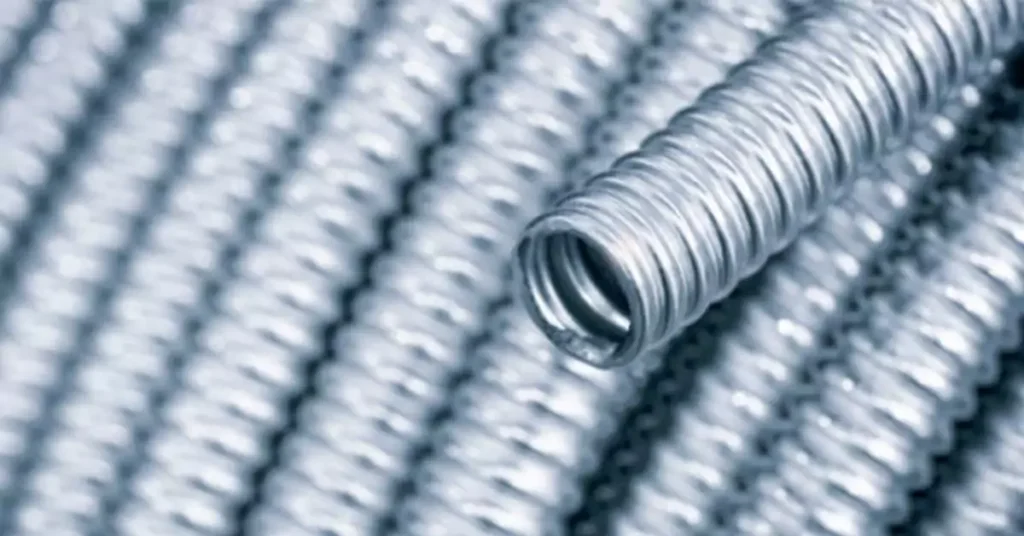
Best For: Indoor installations or environments with minimal physical damage risks.
Benefits: Lightweight and easy to install, making it cost-effective.
Application: EMT is commonly used in parking garages or indoor EV charging stations where high physical protection is less of a concern.
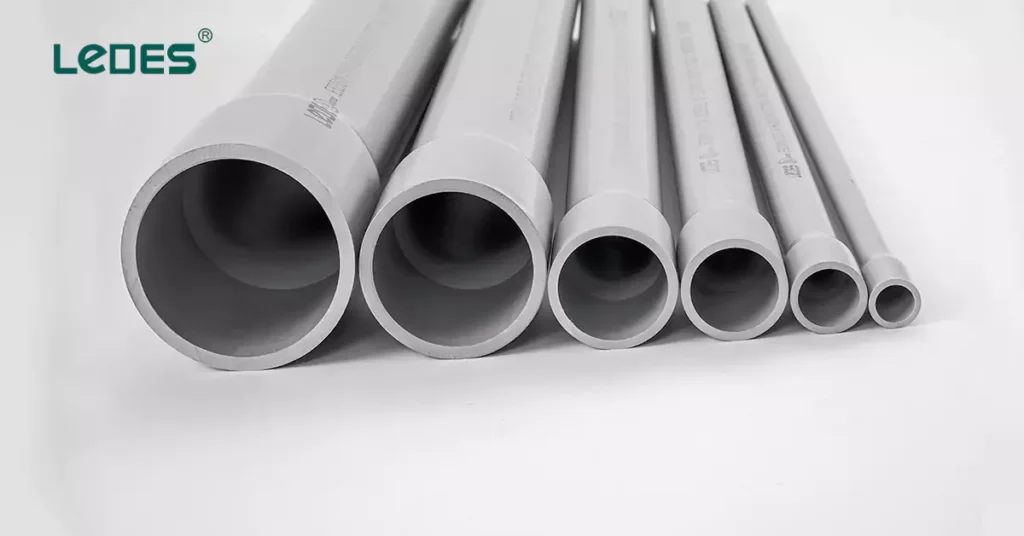
Best For: Outdoor and underground installations with less risk of physical damage.
Benefits: Resistant to moisture and UV rays, making it excellent for outdoor applications, especially in wet or corrosive environments.
Solicitud: Schedule 80 conduit y programar 40 conducto are preferred for underground installations due to its thicker walls and higher resistance to impact.
4 Types of Electrical Conduits for EV Charging Stations (Pros and Cons)
Conduit Types | Strengths | Weaknesses | Best Use |
RMC | Excellent durability, fire-resistant, provides grounding | Expensive, heavy, difficult to install | High-voltage commercial stations |
IMC | Lighter and easier to install than RMC, Durable, corrosion resistant | Heavier than EMT, More expensive than EMT and PVC | Outdoor and commercial environments |
EMT | Lightweight, affordable, easy to install | Less durable, not suited for outdoor/wet locations | Indoor installations |
CLORURO DE POLIVINILO | Corrosion-resistant, moisture-resistant, affordable | Vulnerable to physical damage | Residential or underground installations |
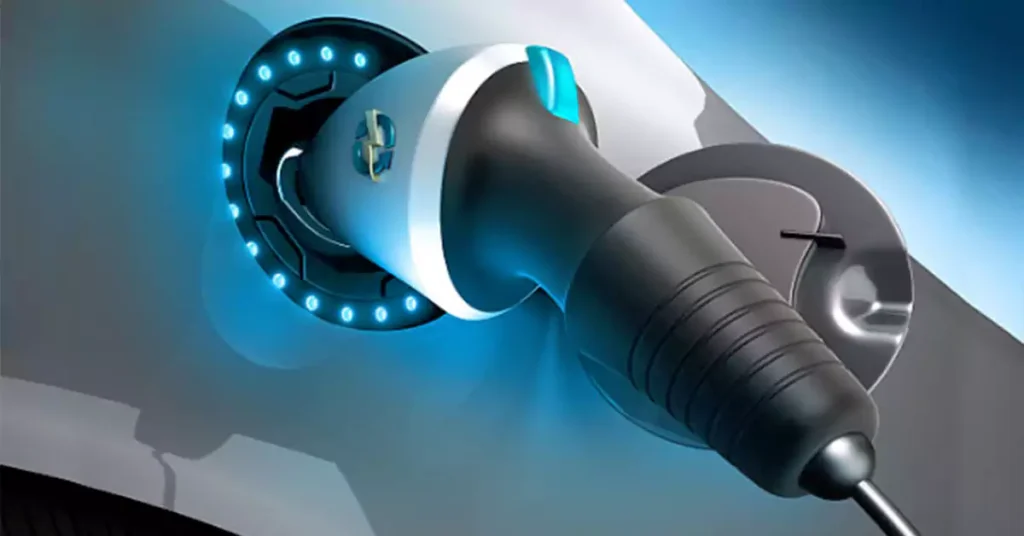
Given the high voltages and current requirements of EV charging stations, selecting the appropriate conduit is essential. Several factors must be taken into account when choosing the conduit for these installations:
EV charging stations, particularly those handling Level 2 or Level 3 charging, operate at higher voltages and currents than typical household installations. The conduits used must be able to safely handle these electrical loads without overheating or degrading over time.
Higher current generates more heat, especially in Level 2 and Level 3 chargers. Proper heat dissipation is vital to prevent overheating and potential fires. Metal conduits like RMC and IMC are preferred for their heat-conducting properties. Fire-resistant conduits further enhance the safety of EV charging systems, especially in confined or high-traffic areas.
Outdoor EV charging stations face exposure to a wide range of environmental conditions, including UV radiation, moisture, temperature extremes, and physical damage. PVC conduits, particularly those rated for UV resistance, are commonly used for outdoor applications. However, in high-traffic areas or locations subject to potential impact, RMC or IMC is often the better choice due to their superior durability.
Many EV charging installations require conduits to be placed underground. In these cases, the conduit must be able to withstand soil pressure, moisture, and chemical exposure. Schedule 80 PVC and RMC are commonly used for underground installations due to their strength and moisture resistance.
For installations where flexibility is required, such as tight spaces or areas with significant movement (e.g., near the charging equipment), LFNC is often the preferred choice. It offers flexibility while maintaining protection from moisture and corrosion.
EV charging stations can be installed in both residential and commercial environments, but the conduit requirements for each differ significantly.
Most residential charging stations are designed for Level 1 or Level 2 chargers, which have lower voltage and current demands. As a result, the conduit requirements are less stringent than for commercial installations. PVC conduit is commonly used in residential setups due to its affordability, moisture resistance, and ease of installation. For underground installations, Schedule 80 PVC is recommended to provide additional protection from physical damage.
In most residential applications, conduit runs are relatively short, and the conduits themselves do not need to be as robust as those used in commercial installations. However, it is still essential to use UV-rated PVC conduit if the installation is exposed to sunlight.
Commercial EV charging stations, particularly those with Level 3 chargers, require more robust conduit systems to handle the higher power demands. RMC or IMC is typically used for commercial installations due to their superior durability, fire resistance, and ability to protect against physical damage. These conduits are also suitable for outdoor installations, where they may be exposed to weather conditions and high traffic.
In commercial setups, multiple charging units are often installed, requiring a complex conduit network that must be carefully planned and installed to ensure safety and efficiency. Commercial installations also require grounding and may need expansion couplings to account for temperature changes that cause the conduit to expand or contract.
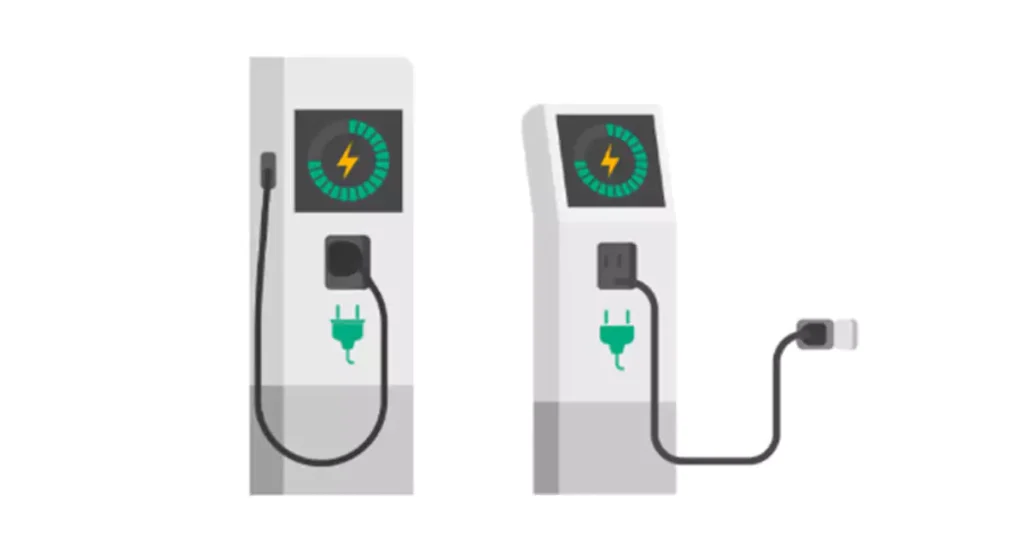
Level 2 chargers operate at 240V and typically require 30-40A circuits, making them a popular choice for home and workplace installations. Conduit solutions for Level 2 stations are relatively straightforward but must account for derating factors if multiple wires share a conduit.
Conduit Material: PVC conduits are often suitable for Level 2 installations, especially for residential settings where corrosion resistance and ease of installation are key. For commercial settings, EMT or RMC might be preferred for added durability.
Level 2 Charging Stations Requirements Data Sheet
Level 2 Charger Specs | Typical Circuit Amperage | Recommended Conduit |
240V, 40A | 40A | 1-inch PVC (Schedule 40) |
240V, 60A | 60A | 1 ½-inch EMT |
DC Fast Chargers operate at much higher voltages and currents (typically 400-800V and 100-400A), necessitating larger conduit sizes and robust protection. These stations are often installed in commercial or public areas where heavy-duty materials like RMC or schedule 80 PVC are required to handle higher electrical loads and provide protection from physical damage.
Conduit Size: Due to the increased current, fast charger installations often require large conduit sizes (e.g., 2-inch or larger), particularly when running multiple wires in the same conduit.
Heat Dissipation: Larger conduits help dissipate heat, reducing the risk of conductor overheating. NEC derating factors become especially important in fast charger installations, where multiple large conductors are present in a single conduit.
DC Fast Charging Stations Conduit Demands Data Sheet
DC Fast Charger Specs | Typical Circuit Amperage | Recommended Conduit |
480V, 100A | 100A | 2-inch RMC |
800V, 200A | 200A | 2 ½-inch Schedule 80 PVC |
As EV technology advances, charging stations will need to accommodate higher voltages and currents. Installing larger conduits during initial construction can save costs and future-proof installations for ultra-fast chargers (above 350 kW), which will require even larger wiring and conduit sizes.
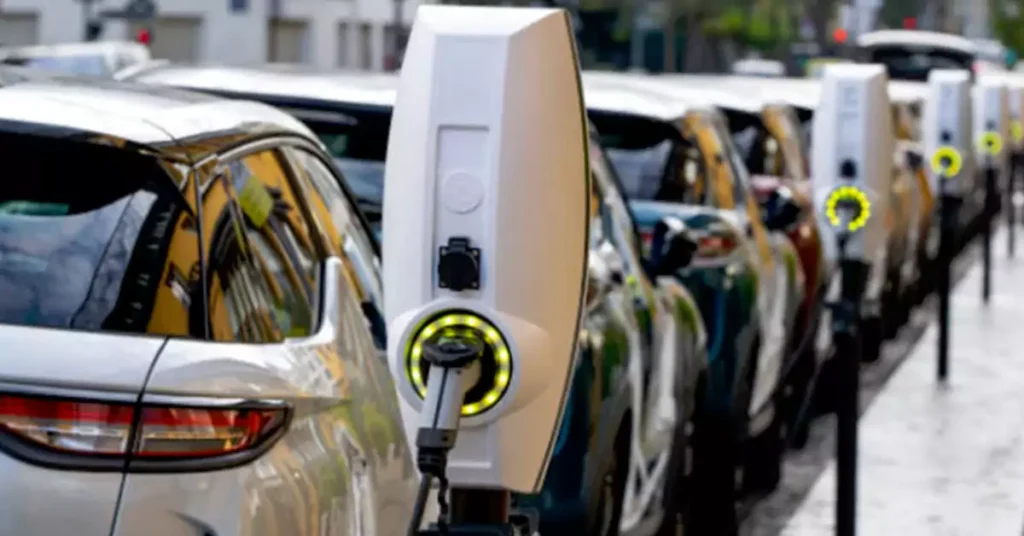
EV charging stations function by transferring electricity from the grid to an electric vehicle’s battery through a charging connector. The process is similar to refueling a gasoline vehicle, but instead of filling up with liquid fuel, the car is charged with electrical energy. Here’s an overview of how these stations operate:
The charging station is connected to a local power grid or renewable energy source, like solar panels. These stations have a charging port where drivers plug in their vehicles. Depending on the type of charger—Level 1, Level 2, or DC fast chargers—the station draws electricity at different rates from the power grid to charge the vehicle.
Most electric grids provide alternating current (AC) power. For Level 1 and Level 2 chargers, the vehicle’s onboard charger converts this AC into direct current (DC), which charges the battery. However, DC fast chargers (Level 3) skip the onboard charger, converting AC to DC directly at the charging station and supplying the battery with DC power for quicker charging.
The charging station communicates with the electric vehicle to ensure a safe and optimal charging process. The system exchanges information on the vehicle’s current battery charge and adjusts the power flow accordingly. Safety protocols, such as automatic shutoff when the battery is full, protect the car and its battery from overcharging or malfunction.
Once connected, the station begins charging the battery. The time it takes depends on the charger type: Level 1 chargers might take 8–12 hours, Level 2 chargers 3–8 hours, and DC fast chargers can provide an 80% charge in around 30–60 minutes. The station continuously monitors the charge, adjusting the flow of electricity to optimize battery health and prevent overheating.
Some EV charging stations are equipped with energy management systems that allow the distribution of electricity during peak demand times or balance power consumption across multiple charging units. This is especially relevant in commercial or public charging stations, where multiple vehicles are charging simultaneously.
Los conductos eléctricos desempeñan un papel crucial en la protección y el alojamiento seguros de los cables de alta tensión que conectan la estación de carga a la red eléctrica. Conductos como los de PVC o RMC protegen el cableado de factores ambientales como la humedad, la radiación UV y los daños físicos. Estos tubos protectores garantizan la funcionalidad y la seguridad a largo plazo de la infraestructura eléctrica, lo que los convierte en un componente vital de todo el sistema de carga.
La instalación de conductos para estaciones de carga de vehículos eléctricos requiere una planificación minuciosa y atención al detalle para garantizar que el sistema funcione de forma segura y eficiente. A continuación, se presenta una guía paso a paso para el proceso de instalación de conductos:
Consejos: Puede obtener más información sobre el guía de instalación de conductos eléctricos en construcción en nuestro último post.
Antes de comenzar la instalación, es fundamental planificar la disposición de los conductos. Identifique la ubicación de la fuente de alimentación y la unidad de carga, y trace la ruta más corta y directa para el conducto. Evite las curvas cerradas y minimice la longitud del conducto para reducir el riesgo de caídas de tensión y sobrecalentamiento.
Según el entorno de instalación y los requisitos de energía, elija el tipo de conducto adecuado. Para instalaciones exteriores o subterráneas, el PVC o el RMC suelen ser la mejor opción, mientras que el EMT es adecuado para instalaciones interiores. Asegúrese de que todos los conductos cumplan con las normas de seguridad pertinentes, como las certificaciones UL de resistencia al fuego.
Comience a instalar el conducto desde la fuente de alimentación, fijándolo a intervalos regulares según los códigos eléctricos locales. Para instalaciones en exteriores, utilice acoplamientos de expansión para compensar la expansión y contracción térmica. Si el conducto se instala bajo tierra, asegúrese de que esté enterrado a la profundidad adecuada (normalmente de 45 a 60 cm para instalaciones residenciales).
Una vez instalado el conducto, pase los cables eléctricos a través de él con una cinta pasacables. Asegúrese de usar cables adecuados para el voltaje y la corriente de la estación de carga del vehículo eléctrico. Evite sobrecargar el conducto para evitar el sobrecalentamiento.
Una vez instalados los cables, pruebe la instalación para asegurarse de que no haya fallas en el sistema. Compruebe la continuidad, la conexión a tierra y la resistencia del aislamiento para garantizar que el sistema sea seguro y funcione correctamente.
Una vez instalados y probados el conducto y el cableado, monte la unidad de carga según las especificaciones del fabricante. Asegúrese de que el conducto esté firmemente fijado a la unidad y de que todas las conexiones estén bien apretadas y selladas.
La instalación de conductos eléctricos en estaciones de carga de vehículos eléctricos requiere una planificación y ejecución minuciosas. A continuación, se presentan algunas prácticas recomendadas para garantizar una instalación segura y eficiente de conductos:
Las estaciones de carga de vehículos eléctricos deben Cumplir con los códigos eléctricos locales y nacionales, como el Código Eléctrico Nacional (NEC). Estos códigos dictan los tipos de conductos que se pueden utilizar, los procedimientos correctos de instalación y las capacidades de carga eléctrica para un funcionamiento seguro.
Consejos: Puede obtener más información sobre Estándares globales para estaciones de carga de vehículos eléctricos de nuestro último post.
Las curvas excesivas o los tramos largos de conducto dificultan el paso de cables, lo que aumenta el riesgo de dañarlos. Las directrices del NEC recomiendan no más de cuatro curvas de 90 grados en un solo tramo de conducto. Los tramos más largos requieren cajas de paso adicionales para evitar sobrecargar los cables.
En instalaciones exteriores o subterráneas, los accesorios estancos y los acoplamientos de expansión son esenciales. Los acoplamientos de expansión son necesarios en instalaciones donde el conducto experimenta expansión y contracción térmica, lo que evita su rotura o separación con el tiempo.
En los sistemas de conductos metálicos, el propio conducto puede actuar como una ruta de puesta a tierra, lo que añade una capa adicional de protección en caso de fallos eléctricos. Una correcta puesta a tierra del sistema de conductos es fundamental para la seguridad general, especialmente en instalaciones de alta tensión.
En zonas de alto tráfico o con maquinaria pesada, la instalación de conductos en espacios protegidos u ocultos puede prevenir daños físicos. El conducto metálico rígido (RMC) ofrece una protección superior contra impactos físicos y debe utilizarse en estos entornos.
El sistema de conductos eléctricos es un componente fundamental de cualquier estación de carga de vehículos eléctricos, ya que protege los cables de alta tensión que alimentan las unidades de carga. Seleccionar los materiales de conducto adecuados y garantizar técnicas de instalación correctas son esenciales para mantener la seguridad, la eficiencia y la longevidad del sistema. Tanto si instala un cargador residencial de Nivel 1 como un cargador rápido de CC comercial, comprender la función del conducto en las estaciones de carga de vehículos eléctricos le ayudará a garantizar una instalación exitosa y segura.

